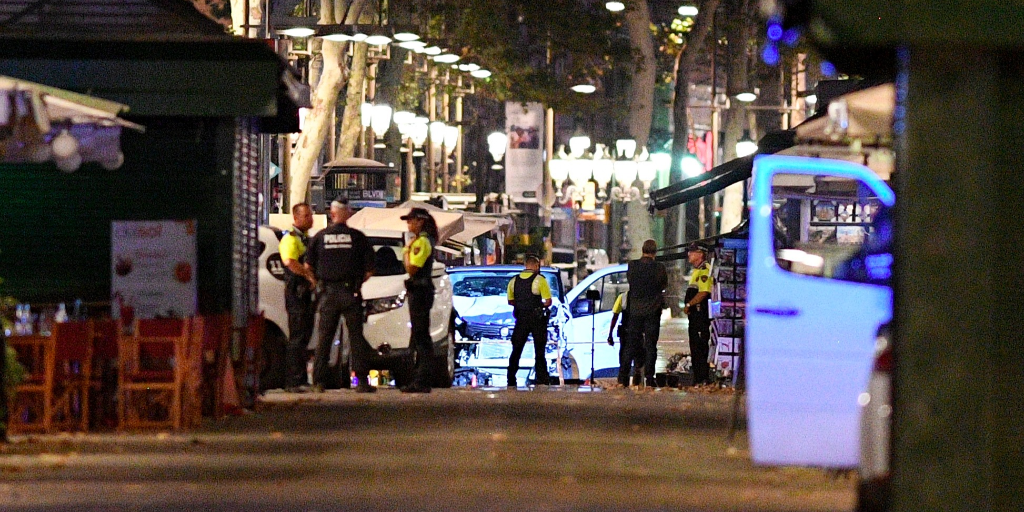KAITLIN LAVINDER
 The West has been hit by a barrage of deadly terrorist attacks over the past two years with little indication there is any definitive way to stop the onslaught.
The West has been hit by a barrage of deadly terrorist attacks over the past two years with little indication there is any definitive way to stop the onslaught.
Why this is happening and what can be done about it was the topic of conversation between national security and counterterrorism leaders from the U.S., Canada, Germany, and the UK, as they convened in Washington on Thursday for an intelligence and security conference.
The sheer number of attacks is staggering. Terrorists ploughed a van through crowds in Barcelona last month, killing 14 people and injuring more than a hundred. In June, eight people in London were killed in a van and knife attack on London Bridge and in nearby Borough Market. There was also the Manchester terror attack in May that killed at least 22 people and injured 59 others, and an attack on Westminster Bridge in March. Germany has seen its fair share of attacks as well – with five separate lone wolf attacks all taking place in one month, July 2016. And of course there were the Brussels bombings, the Nice terror attack, and the Paris shootings.
And the U.S. and Canada have not been immune. Forty-nine people were killed and scores wounded in a mass shooting at an Orlando night club in June 2016. More than a dozen people were killed and around two dozen seriously injured during a shooting in San Bernardino, California at the end of 2015. Investigators said they believe the perpetrators were self-radicalized. In Canada, self-radicalization is a major issue, according to the head of Canada’s Integrated Counterterrorism Center, Chris Rousseau.
Rousseau called the phenomenon “Terrorism 3.0.” He explained this as “inspired or enabled terrorism,” where someone goes on the internet and becomes radicalized. Moreover, “now we’re in a world that’s even more difficult because not only can we not deter them, but they’re going to attack you with a blade or a truck [or some other easy to find device],” and there’s nothing to help us deal with this, he said.
This is vastly different from Terrorism 2.0, which started with the al Qaeda attack on the World Trade Center in New York City in 2001, when the perpetrators decided that they were willing to die in the attack, said Rousseau. That, he said, is very different from Terrorism 1.0, where the perpetrator rarely intentionally killed himself in the act of terror, because he expected to continue committing terrorist attacks in the future.
What is making this ideologically possible is “the Islamization of radicalization,” said Paddy McGuinness, the UK’s Deputy National Security Advisor for Intelligence. We are now dealing with people who are “very young and know almost nothing about Islamic ideology,” he said. Religious ideology has become merely “the excuse” for people who want to commit radical acts of terror, added Rousseau.
What is making Terrorism 3.0 tactically possible is first and foremost the internet.
“The internet is a wonderful thing… and it’s a dreadful thing,” commented McGuinness. He said governments need to fight the giant tech companies who hold massive amounts of data but are reluctant to give authorities access to any of it due to privacy concerns. Nations need access to secure their citizens, McGuinness said.
Rousseau agreed with that, noting that encryption prevents law enforcement and national security professionals from seeing the whole picture. But he also said governments need to work to reestablish trust with their citizens so they buy into this idea.
Certain countries, like Germany, may have a harder time with that than others. Friedrich Grommes, head of the German Federal Intelligence Service’s international terrorism and organized crime unit, noted that because of the country’s Nazi past, there are strict data protection laws in place to maintain citizens’ privacy. However, there is a “growing understanding,” he said, that Germany has to adjust its laws to balance between protecting privacy and discovering illegal acts, like international terrorism.
The tension between privacy and security is a familiar debate in the United States. But Nick Rasmussen, director of the U.S. National Counterterrorism Center, offered a different approach: give the tech companies more information. He said the U.S. government is trying to broaden the amount of data it gives companies, so they can be compelled to act when they see something amiss, rather than be unilaterally forced to act upon government order.
“My humility has grown pretty dramatically over time,” said Rasmussen, with regards to being able to counter terrorism around the world. But, in up to 80 percent of terror cases in the U.S. in recent years, he said, somebody somewhere knew something was wrong. His solution is to do a better job as an intelligence community at making information available to the broader American community.
The only way to really defeat international terrorism, according to Rasmussen, is to work together – through communication with citizens, public-private partnerships, and nation-to-nation. There’s “not a country in Europe” that the U.S. is not involved with on counterterror, he said, and the U.S. now works with 40 or 50 international partners to fight terrorism, compared to just a dozen a few years ago.
No comments:
Post a Comment